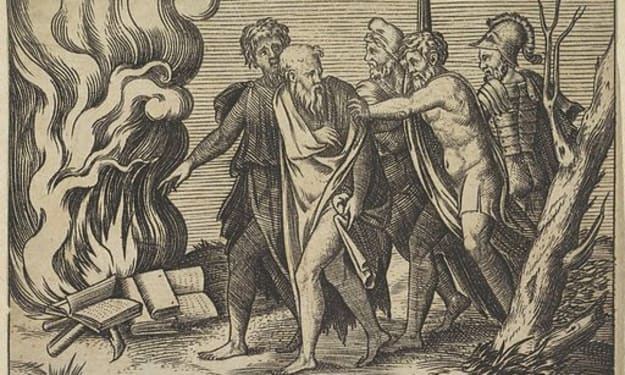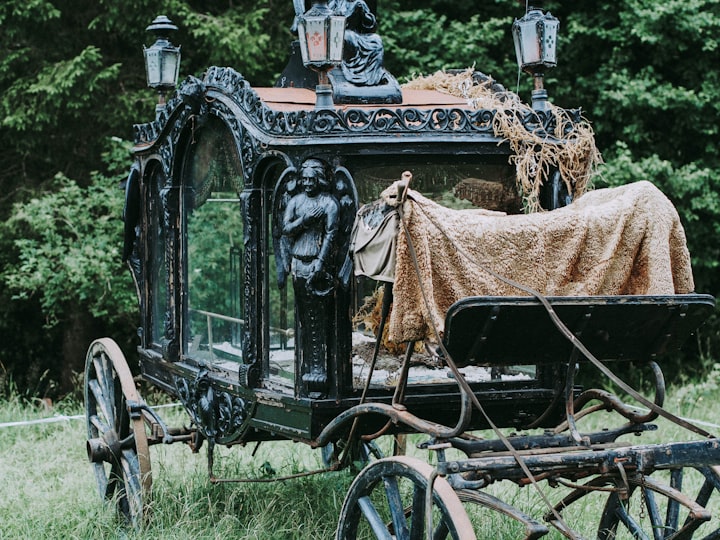The Heterosexualisation of Queerdom
(an Ode to Maddy Morphosis)

The Heterosexulaisation of Queerdom (an Ode to Maddy Morphosis)
Of all the shows that Netflix has lost to the streaming wars, no loss has been more consequential than RuPaul’s Drag Race. That loss is beyond simply being a show that is a little less convenient to watch now. Drag Race’s presence on Netflix was almost as important as the show itself, because it introduced the show to an audience who need to see themselves in the media.
Sure, it’s not like Netflix is lacking in queer content, but Drag Race was something different. Drag Race isn’t merely an artifact of queer culture, it’s queer culture incarnate. I would not hesitate to call it the queerest TV show ever created. And with 14 seasons, and countless international spinoffs, it’s an important example of queer culture standing tall as a beacon of success in the field of mainstream culture.
But by moving to WOW Presents Plus, a streaming service devoted to shows produced by Drag Race’s production company World of Wonder, Drag Race is marginalising itself, standing in one less field of mainstream culture.
Ironic then, that season 14, the first to air exclusively on WOW Presents Plus, is also the first to feature a straight cis male contestant, Arkansas-born Maddy Morphosis.
Until recently, Drag Race had rightly come under fire for seeming to reduce queer culture to cis gay men. But since RuPaul himself was rather publicly called out, things have changed, and the full spectrum of queer culture has more thoroughly been represented (though one could certainly still take issue with the fact that the show is still dominated by cis gay men). Though, with a more diverse cast, I still believe that the most significant inclusion was a straight man (possibly the only time one could ever say that).
In a heteronormative world, no one is born out of the closet, regardless of how queer they are. For this reason, every bridge between mainstream culture and queer culture is invaluable. No longer having Drag Race on the world’s largest streaming service represents a major burnt bridge. But the inclusion of Maddy was a new bridge in itself.
The insularity of queer culture is a survival mechanism, in response to its forced marginalisation. So, I am hardly criticising queer culture for not building more bridges. This is something that’s incumbent on mainstream culture. And while rare, each one of those bridges was significant.
The first man I ever saw wearing a dress was twice married to women, and his only queer relationships were the stuff of innuendo. The first man I ever saw in heels was a notorious womaniser, who even said some homophobic shit late in life. David Bowie and Prince were queer icons, regardless of what else they may have said or done. But they were also titans of mainstream culture. And as a result, when they passed, the effect on the world was seismic. We watched the world mourn our people; and I cannot begin to tell you what that meant to me.
Hearing Bowie or Prince, or Elton John, or Queen in the regressive hypermasculine world of classic rock is one of those things that is so mundane, yet is pretty amazing when you think about it. People who would be actively put off by queer art by queer artists accept this music as the background noise of their lives.
Again, I am not saying we should be courting the gatekeepers of mainstream culture, chasing mainstream success, just for the sake of building these bridges. Like I say, keeping to ourselves is so often literally a matter of survival. Besides, changing what one does to appeal to a wider audience has never gone well for anyone. Queer culture must remain queer culture. But any bridge that can be forged without compromise makes the world a more harmonious place.
The first TV show that I remember having a positive depiction of queerness was…, I can’t believe I am about to say this…, South Park. That show is so problematic now that I would suggest any queer person or ally steer well clear for the sake of their mental health. But back in 1998, when I was 14, and the first season aired, the episode Big Gay Al's Gay Boat Ride was shocking to me for it’s positive depiction of the titular character, and overall message.
Big Gay Al runs an animal sanctuary for gay animals, where Stan’s dog Sparky is found after running away. Big Gay Al explains to the kids that some people (and animals) are gay, and that it’s natural. I remember waiting for a disgustingly bigoted denouement or punchline that never came. As the show came to a close, I became certain that the plainly positive message was misdirection, and that Big Gay Al would keel over from AIDS in the last few seconds (the 90s could not separate queerness from the AIDS epidemic. The 90s' flagship piece of queer media was the AIDS epic Angels in America). That never happened.
What added to that shock was that Big Gay Al, with his Hawaiian shirt, crevat, John Waters moustache, and lisp, was not one of the “good gays” who were a staple of 90s pop culture. The “good gays” were characters like Tom Hanks in Philadelphia, grey-suited wallflowers who deserved equal rights and sympathy because they did not intimidate mainstream culture with their campness. I expected that if anyone were to deliver the ‘it’s okay to be gay’, it would never be a character whose mere appearance elicited laughs.
I remember going to bed that night, my perceptions completely shattered. Big Gay Al’s Big Gay Boat Ride could quite possibly be the most personally significant piece of television I have ever seen.
Which is a very strange sentence to write, but we should be used to it. The albatross around the neck or queer culture is the importance everything has. When a person can be the victim of a hate crime for challenging gender roles in even the smallest way, a hit TV show about the art of drag is one of the most significant pop-cultural artifacts in existence, regardless of how many fart noise sound effects and dick jokes are involved. I hope we’ll have silly ephemeral art one day.
Maddy, I can’t say you were gone too soon; that was probably the worst outfit ever to grace the mainstage (and I remember Lala Ri). But you were what the show needed. You may never be a queer icon, but you might just be the most important contestant the show ever had. Please stick with drag. Please keep being that bridge.
About the Creator
Michael Atkins-Prescott
Non-binary artist, DJ writer, bird fancier and licensed forklift driver.
I'm in New Zealand, with my wife and a cat, a pretty decent kitchen,and a turntable I fixed myself.
pssstt... https://linktr.ee/michaelatkinsprescott






Comments
There are no comments for this story
Be the first to respond and start the conversation.